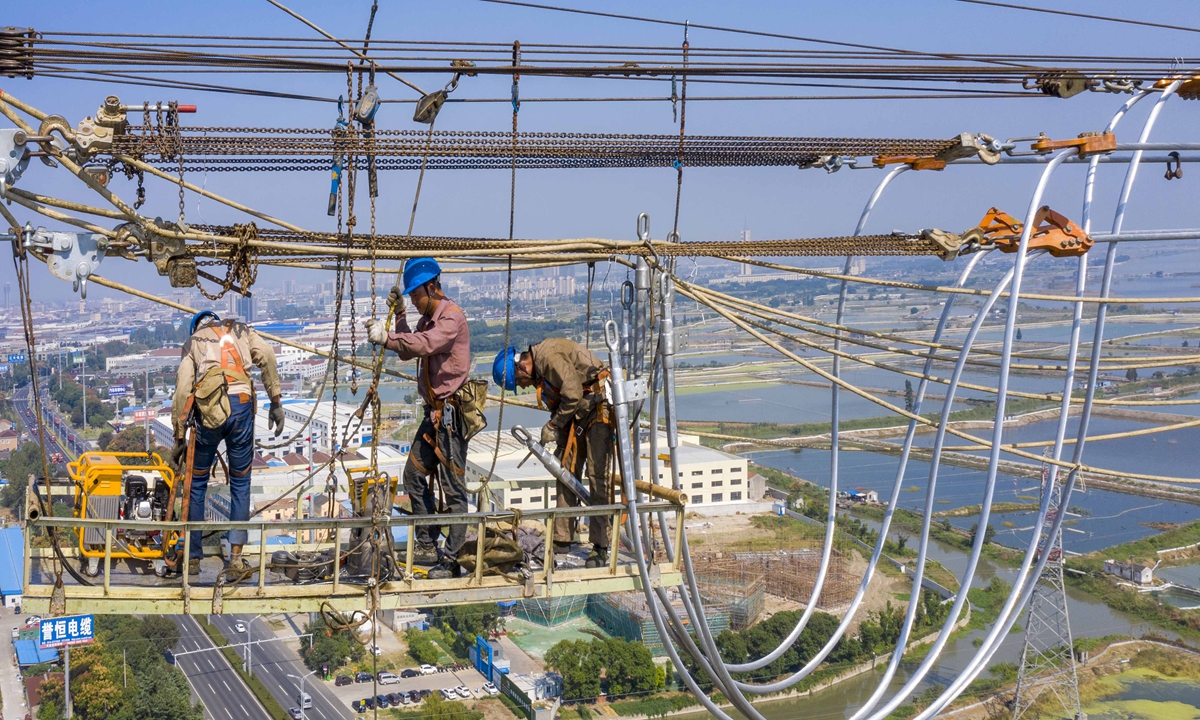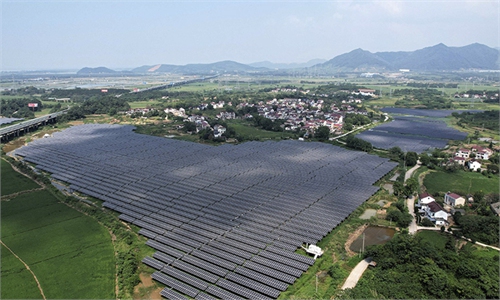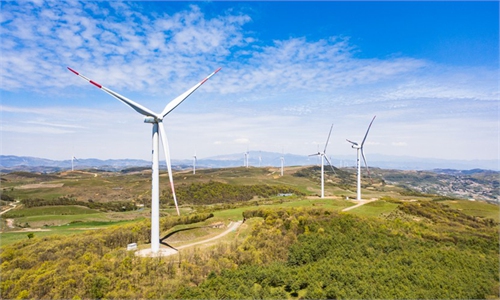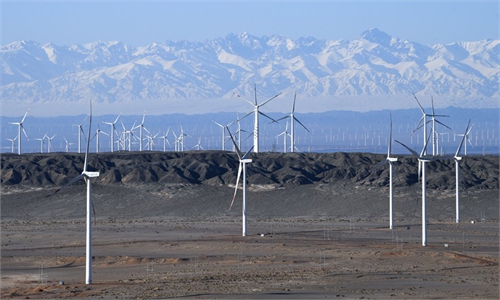
Workers install components along the route of the Baihetan-Jiangsu ±800 kilovolt ultra-high voltage direct current power transmission project on Monday in Wuxi, East China's Jiangsu Province. The project, with a planned length of 2,087 kilometers, is scheduled to go into operation in 2022. Photo: cnsphoto
China's cumulative installed capacity for renewable energy reached 1 billion kilowatts (KW) at the end of October, double that at the end of 2015, latest data from the the National Energy Administration (NEA) showed, highlighting the country's robust efforts to reach its carbon emissions reduction goals.
Renewable energy now accounts for 43.5 percent of the total installed capacity for power generation in China, up 10.2 percentage points from the end of 2015, according to the NEA.
Among renewable sources, the installed capacity of hydropower, wind power, solar power and biomass power plants reached 385 million KW, 299 million KW, 282 million KW and 35.34 million KW, respectively, ranking first in the world.
The installed generation capacity of wind and photovoltaic (PV) power in China is expanding at a very rapid speed, Lin Boqiang, director of the China Center for Energy Economics Research at Xiamen University, told the Global Times on Sunday.
In the first nine months, wind power projects with more than 14 million KW of capacity were put into operation, and the nation's solar power capacity hit 22 million KW, according to a report from the Xinhua News Agency.
On Friday, the sixth unit of the Baihetan Hydropower Station in Southwest China, the world's second-largest hydroelectric facility, started to generate electricity, according China Three Gorges Corp.
This facility is the 100th hydraulic turbine generator unit built by the group across the main stream of the Yangtze River.
"It means that all the 100 hydraulic turbine generator units can be put into full operation to safeguard the winter energy supply, and it also means that the main stream of the Yangtze River has become the world's largest clean energy corridor," said Lei Mingshan, chairman of China Three Gorges Corp.
As of Friday, the installed power generation capacity of China Three Gorges Corp had reached 102 million KW and 96 percent came from clean energy sources.
"Nevertheless, to meet China's goal to reach 'carbon neutrality' before 2060, there's still a long way to go in various sectors, especially wind and PV, as these two are the areas with the biggest potential," Lin added.
According to Lin, wind and PV power generation combined only account for less than 10 percent of China's total power consumption, but the proportion will reach 60-65 percent by 2060.
"It's hard to imagine how many large-scale wind and solar PV power projects will be in China by then," Lin said.
Analysts said that the power grid's carrying capacity and power transmission remain the two biggest challenges for wind and solar power projects in China, especially after damage to local grids from extreme weather.



